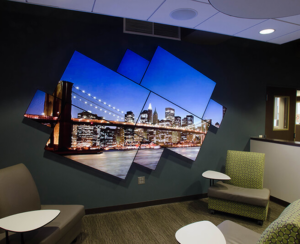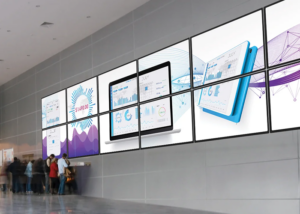In today’s rapidly evolving digital landscape, business owners, marketers, IT professionals, and digital enthusiasts are constantly seeking innovative solutions to captivate audiences, streamline operations, and amplify their message. At the heart of this digital revolution lies the symbiotic relationship between digital signage solutions and Content Management Systems (CMS). Here, we delve into how CMS tools are not just enhancing but are essential to the modern digital signage infrastructure, driving efficiency and impact to unprecedented levels.
The Role of a Content Management System (CMS) in Digital Digital Signage
Digital signage has transcended its traditional role of displaying static images and text, evolving into a dynamic platform that offers engaging, interactive content tailored to specific audiences. Central to this evolution is the Digital Signage CMS—a specialized form of content management system designed specifically for managing and deploying digital content. With features such as centralized control, content distribution, and dynamic content updates, a robust Digital Signage CMS empowers users to seamlessly manage and tailor their digital signage networks. This pivotal tool ensures that messages are not only relevant and engaging but also updated in real-time, leveraging the full potential of digital signage software.
Key Capabilities:
- Centralized Control: Manage multiple digital signage displays from a single dashboard.
- Content Distribution: Efficiently deploy content across various locations simultaneously.
- Dynamic Content: Easily update and modify content in real-time to keep it fresh and relevant.
Benefits of Using a CMS in Digital Signage
The integration of a CMS with digital signage solutions offers a myriad of benefits that can transform the way businesses interact with their target audiences.
Content Scheduling and Remote Management
A CMS enables users to schedule content in advance and manage displays remotely, ensuring that the right message is delivered at the right time and place. This flexibility is critical for tailoring content to specific audiences and occasions, enhancing engagement and impact.

Scalability and Real-time Updates
As businesses grow, their digital signage needs evolve. A CMS provides scalability, allowing businesses to easily expand their digital signage networks without significant additional costs or complexities. Furthermore, real-time update capabilities ensure that content remains current, responding swiftly to any changes in promotions, news, or emergency information.
User-friendly Interface and Cost Efficiency
With its intuitive design, a CMS empowers users of all technical levels to create, manage, and deploy digital signage content efficiently. This ease of use translates into significant savings in both time and resources, making digital signage an accessible and cost-effective tool for enhancing customer engagement and driving sales.
Future Trends in Digital Signage and CMS Integration
As technology continues to advance, so too does the landscape of digital signage and CMS integration. Emerging trends promise to elevate user engagement and operational efficiency to new heights.
AI in Digital Signage and Interactivity
Artificial Intelligence (AI) and Machine Learning (ML) are set to revolutionize digital signage, enabling adaptive content that responds to audience demographics and engagement levels. Interactivity, through touchscreens and QR codes, further amplifies this effect, creating immersive experiences that capture and retain audience attention.
IoT Integration and Analytics
The Internet of Things (IoT) offers seamless integration with other devices and data sources, providing a richer, more contextualized content delivery. Coupled with advanced analytics, businesses can now gain deeper insights into audience behavior and preferences, enabling more targeted content strategies.
Personalization and Sustainability
Personalized content, tailored to the viewer’s interests and behaviors, is becoming increasingly attainable through CMS-driven digital signage solutions. Sustainability, too, is a growing focus, with energy-efficient displays and environmentally friendly content management practices taking center stage.

Conclusion
The integration of a Content Management System with digital signage solutions is not just enhancing; it is redefining the way businesses and organizations communicate with their audiences. By tapping into the power of CMS, users can achieve unprecedented levels of efficiency, engagement, and impact. As we look towards the future, the potential for innovation in digital signage is boundless, promising even more compelling and interactive experiences driven by advanced technologies like AI, IoT, and personalized content.
For those willing to embrace these changes, the benefits are vivid—a more engaged audience, improved operational efficiency, and a tangible boost in messaging effectiveness.
In closing, the path forward is clear: leveraging a robust CMS is essential for harnessing the full potential of digital signage solutions. Whether you’re a business owner, marketer, or IT professional, now is the time to explore how a Content Management System can transform your digital signage strategies, ensuring they are as impactful and efficient as possible.





